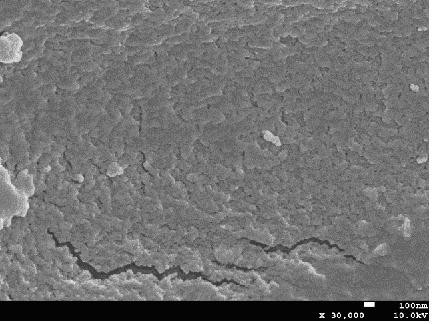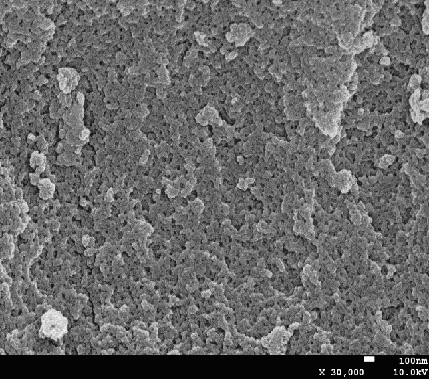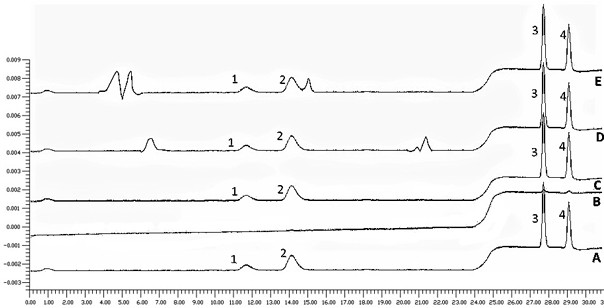Molecularly imprinted polymer, chemiluminescence kit and detection method specific for phenothiazine drug family
A technology of phenothiazines and detection methods, applied in chemical instruments and methods, chemiluminescence/bioluminescence, and other chemical processes, to achieve strong tolerance, ensure safety, and reduce detection costs
- Summary
- Abstract
- Description
- Claims
- Application Information
AI Technical Summary
Problems solved by technology
Method used
Image
Examples
Embodiment 1
[0028] Example 1 Molecularly imprinted polymer synthesis example 1
[0029] (a) 1 part of molecular template 2-trifluoromethylphenothiazine and 5 parts of functional monomer methacrylic acid were dissolved in a solvent, stirred and dissolved, and left to react for 10 hours;
[0030] (b) Add 30 parts of initiator azobisisobutyronitrile and 10 parts of crosslinking agent ethylene glycol dimethyl acrylate to the above reaction system, and shake for 10 hours;
[0031] (c) Put the solid particles obtained after the above reaction in a Soxhlet extractor, and continuously reflux with the extract for 12 hours to extract the imprinted template molecules. The extract used is a mixed solution of methanol and acetic acid, and methanol and The volume ratio of acetic acid is 9:1;
[0032] (d) drying the solid particles after the above reaction to obtain a phenothiazine drug family-specific molecularly imprinted polymer.
Embodiment 2
[0033] Example 2 Molecularly imprinted polymer synthesis example 2
[0034] (a) 1 part of molecular template 2-trifluoromethylphenothiazine and 7 parts of functional monomer methacrylic acid were dissolved in a solvent, stirred and dissolved, and left to react for 12 hours;
[0035] (b) Add 40 parts of initiator azobisisobutyronitrile and 20 parts of crosslinking agent ethylene glycol dimethyl acrylate to the above reaction system, and shake for 12 hours;
[0036] (c) Put the solid particles obtained after the above reaction in a Soxhlet extractor, and continuously reflux with the extract for 24 hours to extract the imprinted template molecules. The extract used is a mixed solution of methanol and acetic acid, and methanol and The volume ratio of acetic acid is 9:2;
[0037] (d) drying the solid particles after the above reaction to obtain a phenothiazine drug family-specific molecularly imprinted polymer.
Embodiment 3
[0038] Example 3 Molecularly imprinted polymer synthesis example 3
[0039] (a) 1 part of molecular template 2-trifluoromethylphenothiazine and 6 parts of functional monomer methacrylic acid were dissolved in a solvent, stirred and dissolved, and left to react for 11 hours;
[0040] (b) Add 35 parts of initiator azobisisobutyronitrile and 15 parts of crosslinking agent ethylene glycol dimethyl acrylate to the above reaction system, and shake for 11 hours;
[0041] (c) Put the solid particles obtained after the above reaction in a Soxhlet extractor, and continuously reflux with the extract for 18 hours to extract the imprinted template molecules. The extract used is a mixed solution of methanol and acetic acid, and methanol and The volume ratio of acetic acid is 9:0.5;
[0042] (d) drying the solid particles after the above reaction to obtain a phenothiazine drug family-specific molecularly imprinted polymer.
[0043] The scanning electron micrographs of the molecularly impri...
PUM
 Login to View More
Login to View More Abstract
Description
Claims
Application Information
 Login to View More
Login to View More - Generate Ideas
- Intellectual Property
- Life Sciences
- Materials
- Tech Scout
- Unparalleled Data Quality
- Higher Quality Content
- 60% Fewer Hallucinations
Browse by: Latest US Patents, China's latest patents, Technical Efficacy Thesaurus, Application Domain, Technology Topic, Popular Technical Reports.
© 2025 PatSnap. All rights reserved.Legal|Privacy policy|Modern Slavery Act Transparency Statement|Sitemap|About US| Contact US: help@patsnap.com



